- Properties of Food Grade Aluminum Foil
- Specifications of Food Grade Aluminum Foil
- Haomei Aluminum Food Grade Aluminum Foil
- Advantages of Food Grade Aluminum Foil
- Uses of Food Grade Aluminum Foil
- Common Food Grade Aluminum Foil Application Cases
- Safety Considerations
- Environmental Impact and Recycling
- Frequently Asked Questions about Food Grade Aluminum Foil
Food grade aluminum foil has become an indispensable item in kitchens around the world, serving various purposes from food storage to cooking and grilling.
Known for its versatility, durability, and ability to preserve the freshness of food, food grade aluminum foil plays a crucial role in modern culinary practices.
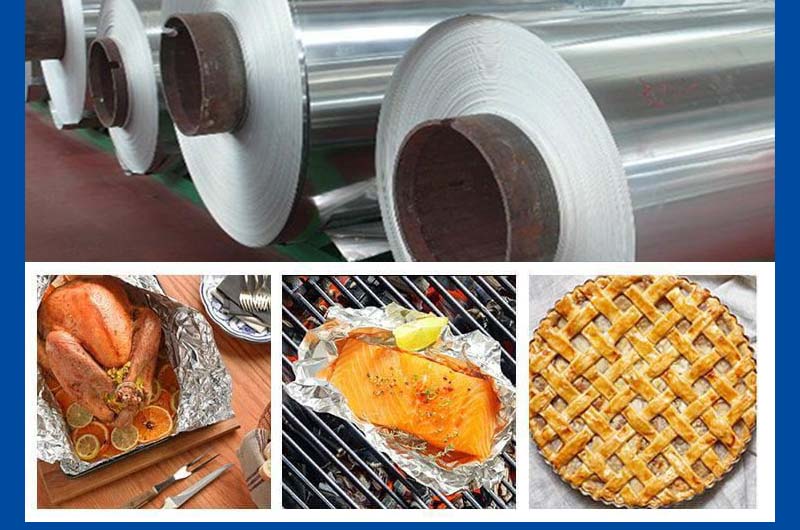
Properties of Food Grade Aluminum Foil
Material Composition: Food grade aluminum foil is typically made from an alloy called 8011, which consists of aluminum and other trace elements. This alloy is chosen for its ability to withstand high temperatures and provide a barrier against moisture, light, and bacteria.
Thickness and Strength: Food grade aluminum foil comes in various thicknesses, ranging from standard to heavy-duty. Thicker foils offer increased strength and resistance to tearing, making them suitable for more demanding applications such as grilling and baking.
Heat Conductivity: One of the standout properties of aluminum is its excellent heat conductivity. This allows food grade aluminum foil to distribute heat evenly during cooking, ensuring uniform cooking and preventing unevenly cooked food.
Specifications of Food Grade Aluminum Foil
| Equivalent name | aluminum paper roll, aluminum film coil, etc |
|---|---|
| Alloys(1000 series, 3000 series, 8000 series) | 1050, 1060, 1100, 1235/3003, 3004/8006, 8011, 8021, 8079 aluminum foil |
| temper | O, H14, H16, H18, H19, H24 etc. |
| Color | gold, silver, colored, etc |
| Thickness | 0.006-0.20 mm, 40 microns, etc |
| Width | 100-1600 mm |
| Product type | aluminum foil jumbo roll raw material ( not finished small foil roll ) |
| Standard | ASTM B209, GB/T 3880, EN AW, DIN, MSRR, AMS, JIS, AISI, BS, etc |
Haomei Aluminum Food Grade Aluminum Foil
1 series Food Grade Aluminum Foil
- 1235 food grade aluminum foil
- 1050 food grade aluminum foil
- 1060 food grade aluminum foil
- 1100 food grade aluminum foil
3000 series Food Grade Aluminum Foil
- 3003 food grade aluminum foil
- 3004 food grade aluminum foil
8 series Food Grade Aluminum Foil
- 8011 food grade aluminum foil
- 8021 food grade aluminum foil
- 8079 food grade aluminum foil
Food packaging foil: milk cap material, lunch box material, container foil, household foil, barbecue foil, beer sealing foil, bottle cap material, etc.
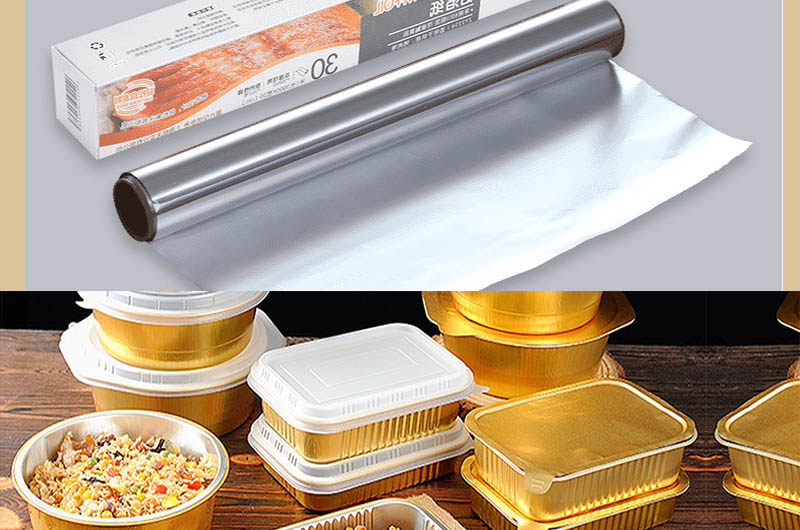
Advantages of Food Grade Aluminum Foil
With the continuous improvement of people's living standards, food safety issues have received more and more attention. Food-grade aluminum foil is widely used in the food packaging industry due to its superior physical and chemical properties.
1. Food quality assurance
Food-grade aluminum foil is a high-quality packaging material that can effectively protect food from external contamination and ensure product quality and hygiene. The physical properties of food-grade aluminum foil can effectively block the intrusion of factors such as light, moisture, oxygen, microorganisms and odors, eliminating the risk of food deterioration and corruption.
At the same time, the surface of food-grade aluminum foil is smooth and easy to clean and disinfect, which can improve the hygienic standards of food processing.
2. Good food preservation effect
Food-grade aluminum foil can effectively prevent the entry of oxygen, prevent the growth and reproduction of bacteria, achieve long-term storage, better maintain the quality and taste of food, and save the cost of food storage and transportation. Food-grade aluminum foil can also play a role in heat preservation and moisturizing, making food fresher and more delicious.
3. Green and environmentally friendly
At present, green environmental protection has become a hot topic of social concern, and food-grade aluminum foil has become a green and environmentally friendly packaging material due to its good recyclability. Through the recycling and reuse of aluminum foil, the consumption of raw materials and energy can be saved, and the impact of waste and pollution on the environment can be reduced.
4. Easy to use
Compared with other packaging materials, food-grade aluminum foil is more convenient and practical to use. Aluminum foil can be easily folded, wrapped and sealed to meet the needs of a variety of packaging methods. In addition, aluminum foil packaging has a certain sterilization effect and does not require high-temperature sterilization, which reduces the cost and time of food processing.
5. Cost controllable
When selecting packaging materials, cost is a factor that cannot be ignored. Compared with other packaging materials, the price of food-grade aluminum foil is more reasonable and has certain cost advantages. With the development of technology and the general price reduction of raw materials, the price of food-grade aluminum foil will fall further.
In short, food-grade aluminum foil has excellent physical and chemical properties and has broad application prospects in the food packaging industry. The development trend of food-grade aluminum foil is to continuously improve its quality and performance, expand its use areas, and achieve better energy conservation, emission reduction, environmental protection, and resource recycling.
Uses of Food Grade Aluminum Foil
- Food Storage: Aluminum foil is widely used to store food in refrigerators and freezers. It creates a protective barrier against moisture, odors and contaminants, helping to keep fruits, vegetables and leftovers fresh.
- Cooking and Baking: Aluminum foil's ability to withstand high temperatures makes it a popular choice for cooking and baking. It is commonly used for wrapping and baking meat, fish, and vegetables, and for lining baking sheets and pans.
- Grilling: Food grade aluminum foil is commonly used for grilling. It prevents food from sticking to the grill, promotes even cooking, and helps retain moisture for delicious dishes.
- Food packaging: Many pre-packaged foods, especially in the takeout and catering industries, are packaged in aluminum foil. Not only does this serve as a protective barrier, but it also serves as a convenient and hygienic way to eat and drink.
Common Food Grade Aluminum Foil Application Cases
1. 8011 food grade aluminum foil for chocolate packaging
Aluminum foil specifically designed for packaging chocolate products such as bars, bars and coins. It provides a protective barrier from light and moisture, preserving the freshness and flavor of the chocolate.
- Temperament: Soft (usually expressed as O).
- Thickness: Typically 9 to 20 microns
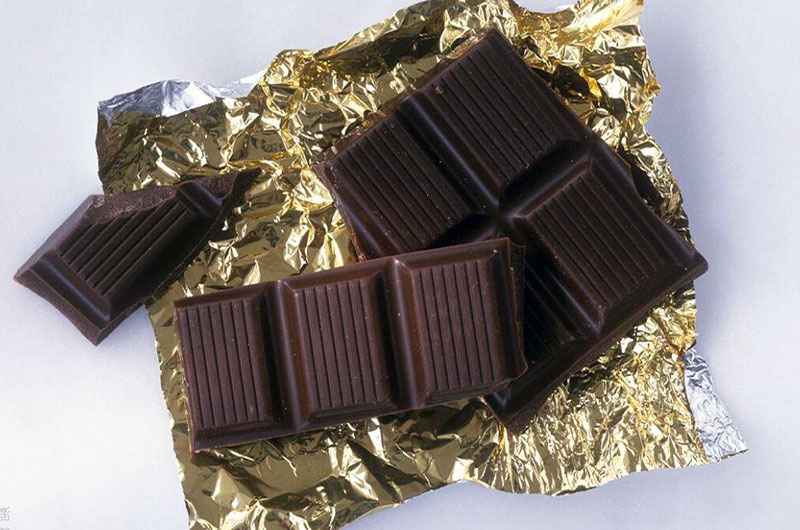
2. 8011 food grade aluminum foil used for butter packaging
8011 aluminum foil is used to package butter. It helps protect butter from air and light, preventing spoilage and maintaining its quality.
- Temperament: Soft (usually expressed as O).
- Thickness: Typically 9 to 20 microns.
3. 8011 aluminum foil for Food packaging
Aluminum foil for general food packaging purposes. This includes packaged items such as sandwiches, burgers, chicken, and more. It helps maintain the freshness of food during storage and transportation.
- Alloy: 8000 series, such as 8011.
- Hardness: Soft (O), flexible.
- Thickness: Varies depending on the specific requirements of the package, but can range from 9 to 30 microns.
4. 8011 Food grade aluminum foil is used for yogurt packaging
- Alloy: 8000 series, usually 8011.
- Temperament: Soft (O).
- Thickness: Typically in the 10 to 20 micron range.
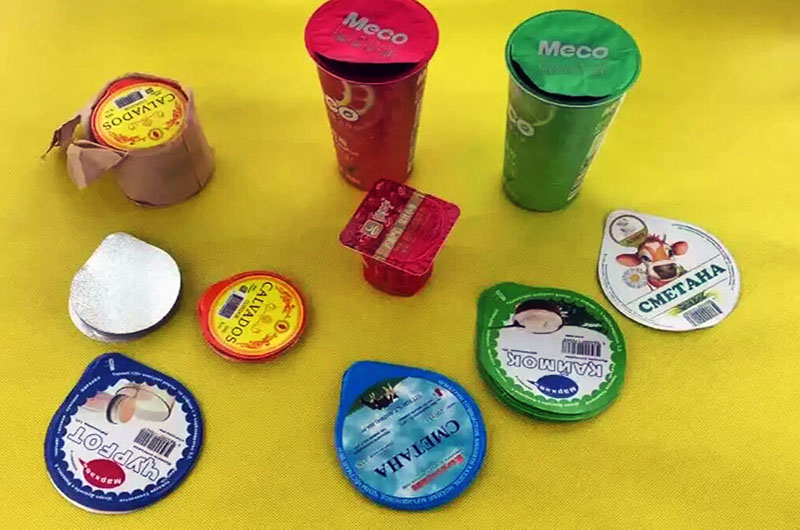
5. 8011 3004 Aluminum foil for food lunch box containers
Aluminum foil is used to make food containers such as trays and pans. These containers are suitable for baking, baking and storing food. They provide a convenient and versatile option for cooking and serving.
- Alloy: 8011, 3004
- Temperament: Varies, but usually Soft (O) for flexibility.
- Thickness: Typically 30 to 100 microns, depending on the type of container.

6. Food grade aluminum foil for oven use
Oven-safe aluminum foil. It can be wrapped around food or on an oven rack for baking or roasting. It provides a barrier against direct heat, helping to cook evenly.
- Alloy: 8000 series, such as 8011.
- Temperament: Generally soft (O), with flexibility.
- Thickness: Typically 15 to 30 microns, depending on application.
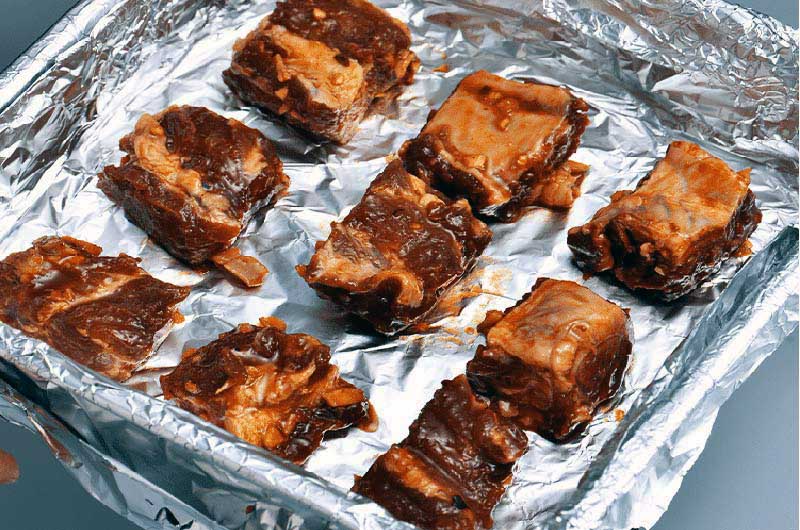
7. Food grade aluminum foil for beverage packaging
Thin-layer aluminum foil used in carton beverage packaging. These thin foils are waterproof, odor-proof and prevent the intrusion of external contaminants.
- Alloy: Typically 8011.
- Temperament: Soft (O).
- Thickness: Very thin, typically around 6 to 9 microns, providing a lightweight barrier.

8. Food grade aluminum foil used for beer sealing foil
- Alloy: Generally 8011.
- Temperament: Soft (O).
- Thickness: Approximately 40 to 50 microns for a secure seal.
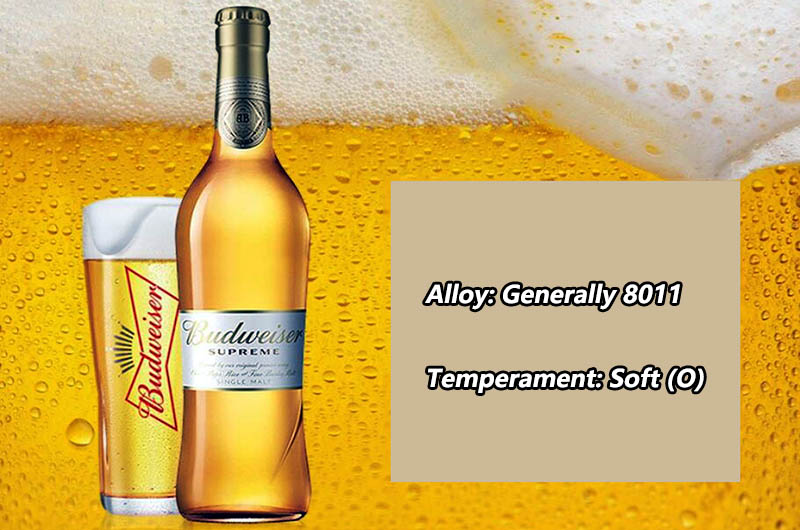
9. Special purposes (decoration, hairdressing, etc.)
Aluminum foil is used for a variety of special purposes, including decoration, hair styling (such as highlighting hair), and other creative or practical applications.
- Alloy: Depends on the specific application, but common are 8000 series alloys such as 8011.
- Temperament: Varies according to the need for flexibility or rigidity.
- Thickness: Depends on specific application, but can range widely.
It is important to note that each type of food grade aluminum foil has specific properties to meet the requirements of its intended use.
Safety Considerations
- Food Safety: Food grade aluminum foil is considered safe for cooking and food storage. It does not impart any taste or odor to the food and is generally inert, posing no known health risks when used appropriately.
- Avoiding Acidic and Salty Foods: While aluminum foil is safe for most cooking applications, it is advisable to avoid using it with highly acidic or salty foods. The acidity or salt content can react with the aluminum, potentially leaching small amounts into the food. This is more of a concern with prolonged cooking times.
- Proper Usage: To ensure safety, it's essential to use food grade aluminum foil for its intended purposes. Avoid using non-food grade aluminum foil for cooking or storing food, as it may contain impurities that can be harmful.
Environmental Impact and Recycling
Recyclability: Aluminum is highly recyclable, and recycling food grade aluminum foil is a simple process that helps reduce environmental impact. Many recycling programs accept aluminum foil, but it's crucial to clean the foil of any food residue before recycling.
Resource Efficiency: Aluminum is known for being resource-efficient as it can be recycled repeatedly without losing its quality. Recycling aluminum requires significantly less energy compared to extracting it from raw materials, making it an environmentally responsible choice.
Frequently Asked Questions about Food Grade Aluminum Foil
What is food grade aluminum foil?
Food grade aluminum foil refers to aluminum foil that is suitable and safe for contact with food. It meets certain safety and quality standards to ensure it does not transfer any harmful substances to the food it is in contact with.
Is aluminium foil safe for food?
Yes, aluminum foil designated as food grade is safe to use for food preparation, cooking, and storage. It's a common choice for wrapping food to store in refrigerators or freezers, lining baking pans, and cooking food in ovens or on grills.
Which side of aluminum foil is safe for food?
Both sides of aluminum foil are equally safe for food use. There is no significant difference in safety or performance between the two sides. Due to manufacturing processes, manufacturers may make one side of the foil slightly more shiny or dull compared to the other, but both sides can safely come into contact with food.


